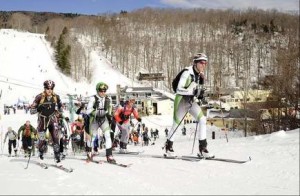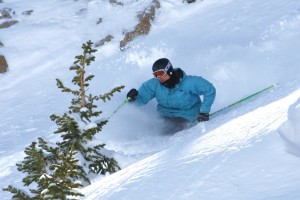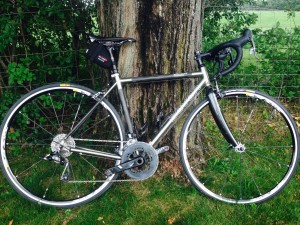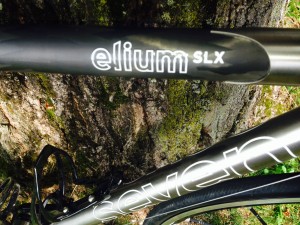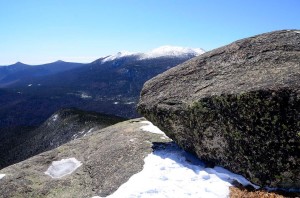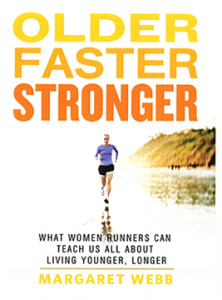Nutrition and Training go hand in hand to produce health and performance. In my role as a writer, and as field editor of the ACTIVE VERMONT page of each Sunday’s Rutland Herald & Times Argus, I am privileged to meet experts and fellow participants in the active life we share in Vermont. It is my pleasure to introduce you to one of the best, Kim Evans of Whole Health Nutrition in Williston, Vermont.
Below is my introduction of Kim as well as her writing on nutrition and the athlete. Both stories appeared in ACTIVE VERMONT, 3-1-2015.

Kimberly Evans, MS, RD, co-owner of Peak Physical Therapy Sports and Performance Center and Whole Health Nutrition
Meet Kimberly Evans, dancer, athlete, business owner, mother of five and generous friend. Professionally, Evans is a registered dietitian whose continuing quest for knowledge gives her depth in specialized areas of sports nutrition, functional medicine and integrative nutrition.
Often introduced as a sports and wellness nutritionist, Evans teaches and lives her belief that “Food should be friend, fuel and fun.” To Evans, it’s all about the “power of nutrition meeting the pleasure of eating.”
Evans spent her early years in Michigan, living in New York City and Pennsylvania as well. “I’m a person who likes change,” she said. One summer, Evans came to Vermont to hike and fell in love with the state. A 1998 return visit sealed the deal. It was Halloween and a stroll along Church Street in downtown Burlington with everyone dressed up in costumes provided the final nudge for a move here in 1999. “It stuck,” Evans said. “The more I travel and the more I see, I realize that Vermont is a special place.”
Talking with Evans, one becomes aware of the juxtaposition of care with knowledge, theory with practice, composure with passion and the desire to reach to the center of another’s needs. “Vermont has allowed me to develop myself as a professional in the world of health and wellness.” In her chosen field, Evans is required to maintain her accreditation as a registered dietitian with rigorous continuing education layered on top of her bachelor’s and master’s degrees in psychology and health care administration.
“I’m a person who loves to learn,” Evans said. As an RD, she is tasked to continually develop. Evans would have it no other way. What makes the academic practical for Evans is her personal history of movement, sports and an active lifestyle.
Evans began to dance at the age of 3 and didn’t stop until 37 years later. “Because I was a dancer, I wasn’t allowed to run,” she said. “I was always that kid in high school who couldn’t run a mile, always a ‘bun head’.” As soon as the dance chapter of her life closed, the running chapter opened. Perhaps the discipline of dance, the order, the attention to form and technique, the willingness to put in hours of practice, helped transform Evans into a runner and a cyclist. Evans now claims that she is not an adrenaline junkie, but wants to “role-model for her children and her community.” She does so, and well.
Evans is indeed passionate about her family, community, work and clients. More significantly, she embraces a deep feeling of responsibility with respect to her own health and body, and shares that sense of responsibility with others in pursuit of health and well-being as well as performance. “Eat well and move your body,” she said. “You are what you eat.” Be responsible, honor emotional, physical and spiritual well-being.
Evans is co-owner (since 2010) of Whole Health Nutrition in South Burlington, as well as Peak Physical Therapy Sports and Performance Center in Williston. “I am excited to be a part of an integrated wellness practice,” she said. “The model is exciting. We wrap a team around people striving to reach their goals.”
Welcome Kimberly Evans to the “Active Vermont” page. She will periodically share insights on relevant topics of nutrition related to recreational and competitive sports as well as individual pursuit of balance, strength, health and vibrant daily life.
FUEL FOR THOUGHT. Active people need to include nutrition in their training.
By KIMBERLY EVANS
Eating can be complicated. Let’s face it, there are almost as many opinions about nutrition as there are people who eat. That’s a lot of opinions. Eating to fuel athletic performance can be even more confusing. Think about it. Where, as an athlete or an active person, did you learn about nutrition specific to fueling your activity? Do you have set fueling practices? If you are like many athletes that I know the answer would be ‘no.’
Typically, when an athlete comes into my office, they often have a detailed plan about their workouts and training, and gadgets to support the plan. Yet when I ask them about their nutrition plan, I get a blank look. Nutrition is simply overlooked. Here is the thing. Whether you are an endurance athlete or a recreational athlete, a newly active person or an experienced competitor, your nutrition practices need to be at least 50 percent of your training effort.
Proper fueling increases lean body mass, making strong performance more attainable. Regularly adhering to good nutritional practices helps to reduce the risk of injury while shortening recovery time between exercise and managing hormones, such as cortisol, associated with exercise.
Meeting nutritional goals translates to meeting training and sports performance goals. When performance declines, there can be several reasons, such as lack of sleep, overtraining or inadequate fuel. Nutrition supports the mental and emotional aspects of sports performance as well. Fueling appropriately keeps your head “in the game,” improves mood and helps prevent fatigue.
But here’s a favorite reason to underpin your playing, training or competing with good nutrition: You have another reason to eat. This is always a plus for me.
Let me share my story. I have been a registered dietitian for 27 years, and yet I learned about sports nutrition the hard way. I grew up dancing ballet. Dancers have their own ideas about nutrition. When I turned 40, I decided it was time to hang up my pointe shoes and tutu and take up running. This is where trouble began.
Very early into training for my first half-marathon, I realized that something was not going according to plan. My first impulse was to also hang up my running shoes and dismiss my troubles as me just being a “bad runner.” But I am determined and when I set my mind to something I am going to do it.
I decided to engage in my own medicine and began tracking and analyzing my eating in relationship to my training expectations. The results were staggering.I was eating too few calories, very little carbs, and was woefully deficient in vitamin C and iron, amongst other things. I am a quick learner. I made some adjustments to my own eating, ran that half-marathon (and many more after) and my quest began to learn as much about nutrition in relationship to various physical activities as possible.
GET STARTED. In a nutshell, here are my top three tips to get you started thinking about your own sports nutrition practices.
1. Meet your energy needs. All bodies require fuel and athletes need even more. The more you move, the more you need. Fuel demands are made up of your basic metabolic needs, daily activity, digestion and exercise. Most of us need a bit more fuel than we think we do. Consider getting your resting metabolic rate assessed. RMR is a measurement of how many calories a day your body needs as a bare minimum, just to breathe, digest, function and stay alive.
2. Don’t fear carbohydrates. Endurance athletes and athletes in the “push” phase of their training have a particularly high demand for carbs. Match your carb intake to the intensity of your activity. Choose quality carbs such as oatmeal, quinoa, brown and wild rice, beans, sweet potatoes, and the ancient grain farro.
3. Time your eating with your exercise. Strive to calorically balance your day, including energy expended during exercise. What you eat before, during and after exercise will help to maximize performance and improve recovery times.
You don’t have to be an elite athlete to benefit from applying the science of sports nutrition. Small changes and attentiveness to eating will surprise you with big changes in health, energy, stamina and performance.
If you are wondering how to get started, check out some of my favorite resources for athletes:
Visit a registered dietitian who specializes in sports dietetics. This professional will have an RD after his or her name, and sometimes CSSD.
Sign on to Nutritiming to see how it can help with personalized, specific information. The website is nutritiming.com/welcome.
Runner’s World Magazine is a valuable resource for training and nutritional information that applies to all athletes, not just runners.
Finally, move more, eat better. Eat better, move more. Enjoy.
Kimberly Evans, MS, RD, is co-owner of Peak Physical Therapy Sports and Performance Center in Williston and Whole Health Nutrition in South Burlington. She can be reached at RD@wholehealthnutritionvt.com or visit her website: www.wholehealthnutritionvt.com.





